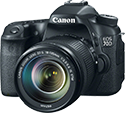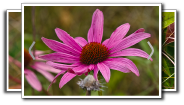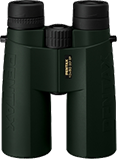nosy pill woodlouse
(Armadillidium nasatum)
Conservation • Description • Habitat • Biology • Distribution • Taxonomy
|
|
||||||||||||||
Description |
Nosy pill woodlouse, also called nosy pillbug, is a large, exotic, terrestrial woodlouse. It is native to southwestern Europe. The precise date of its introduction into North America is unknown, but it was collected in a town in southern Iowa by M. Longnecker in 1924. It now occurs in the United States from Maine to South Carolina, west to Minnesota and Oklahoma, with additional scattered populations in major metropolitan areas in the rest of the country. In southern Canada it occurs in Nova Scotia, Quebec, Ontario, and British Columbia. It is said to be one of the most common of all onoscids (suborder Oniscidea) in southeastern United States. Nosy pill woodlouse is found in cities, old quarries, graveyards, agricultural areas, railway lines, houses, garden centers, and greenhouses. It is usually found under logs, stones, or other structures that create a shady, humid microhabitat. It is synanthropic, meaning that it has adapted to live in close association with humans. Most observations in natural areas are in forests near roads or buildings, indicating that the species was transported through human activity, such as the dumping of stones. It is rarely found in grasslands, except where there is a heap of stones nearby. Adults are ¼″to 13⁄16″ (6 to 21 mm) in length. The body is oval in outline and more or less compressed above. There are three color variations: dark gray, red, and brown. There is a pair of dark longitudinal stripes in the middle (middorsal stripes) and one dark longitudinal stripe on each side (lateral stripes). The head is about twice as wide as long. A narrow, squarish lobe (snout) protrudes in front of the head like the bill of a ball cap. This is the feature that gives the species its common name. There are two small compound eyes, one on each side of the head, and no simple eyes. There are two pairs of antennae. The first pair are greatly reduced to the point of being almost microscopic. The thorax (pereon) is large and has seven segments of slightly unequal length. There is a single jointed leg on each side of each segment. The upper exoskeletal plate (tergite) on each thoracic segment and the first five abdominal segments are expanded on each side into a thin, flat, lateral extension (epimeron). On tergite 1, the rear angle of the epimeron extends sharply backward. On succeeding tergites, the angle is progressively less. On the tergite 1, the front angle on each side extends forward. The abdomen (pleon) is much smaller and has six segments, all of which are distinct. The junction between the pereon and the pleon is smooth, not stepped. The lateral portions of the first two abdominal segments are concealed beneath the seventh thoracic segment. The third, fourth, and fifth segments have prominent, well developed, epimera. The last segment, the sixth, is called the telson. It is rounded and does not extend beyond the epimera of the fifth segment. On each side of the telson there is an elongated appendage, called a uropod. The uropods do not extend beyond the end of the body. |
Size |
Total length: ¼″to 13⁄16″(6 to 21 mm) |
Similar Species |
Habitat |
|
Biology |
Season |
Year-round |
Behavior |
When disturbed, it will roll itself into an incomplete, protective sphere, with only its antennae protruding. |
Life Cycle |
|
Food |
Plant and animal organic matter |
Distribution |
||
|
Sources |
|
| 4/23/2025 | ||
Occurrence |
||
|
||
Taxonomy |
|
Subphylum |
Crustacea (crustaceans) |
Superclass |
Multicrustacea (typical crustaceans) |
Class |
Malacostraca (malacostracans) |
Subclass |
Eumalacostraca (decapods, isopods, and allies) |
Superorder |
Peracarida (amphipods, isopods, and allies) |
Order |
Isopoda (Isopods) |
Suborder |
Oniscidea (woodlice, pillbugs, and rock slaters) |
Infraorder |
Holoverticata (woodlice and pillbugs) |
Zoosection |
Crinocheta |
Family |
Armadillidiidae (pill woodlice) |
Genus |
Armadillidium (pillbugs) |
Subordinate Taxa |
|
The number of recognized subspecies and their scientific names varies between sources. No records in North America are classified to the subspecies level. |
|
nosy pill woodlouse (Armadillidium nasatum ssp. flava) nosy pill woodlouse (Armadillidium nasatum ssp. mehelyi) nosy pill woodlouse (Armadillidium nasatum ssp. garganicum) ? nosy pill woodlouse (Armadillidium nasatum ssp. nasatum) nosy pill woodlouse (Armadillidium nasatum ssp. nigrescens) nosy pill woodlouse (Armadillidium nasatum ssp. saidovni) nosy pill woodlouse (Armadillidium nasatum ssp. sardoum) ? |
|
Synonyms |
|
Armadillidium méhelyi Armadillidium nasatum ssp. mehelyi Armadillidium nasatum var. flava Armadillidium nasatum var. nigrescens Armadillidium nasutum Armadillidium nasutum ssp. sorrentinum Armadillidium quadrifrons Armadillidium sorrentinum |
|
Common Names |
|
nosy pill woodlouse nosy pillbug nosy pill-bug |
|
Glossary
Ocellus
Simple eye; an eye with a single lens. Plural: ocelli.
Tergite
The upper (dorsal), hardened plate on a segment of the thorax or abdomen of an arthropod or myriapod.
Uropod
On some crustaceans, a pair of appendages on the sixth and final abdominal segment. On lobsters and similar species, it forms part of the tail fan.
Visitor Photos |
||
Share your photo of this crustacean. |
||
This button not working for you? |
||
Alfredo Colon |
||
 |
 |
|
 |
 |
|
 |
 |
|
 |
||
MinnesotaSeasons.com Photos |
||
|
||
|
||

Visitor Videos |
||
Share your video of this crustacean. |
||
This button not working for you? |
||
|
Other Videos |
||
|

Created: 4/23/2025 Last Updated: © MinnesotaSeasons.com. All rights reserved. |




